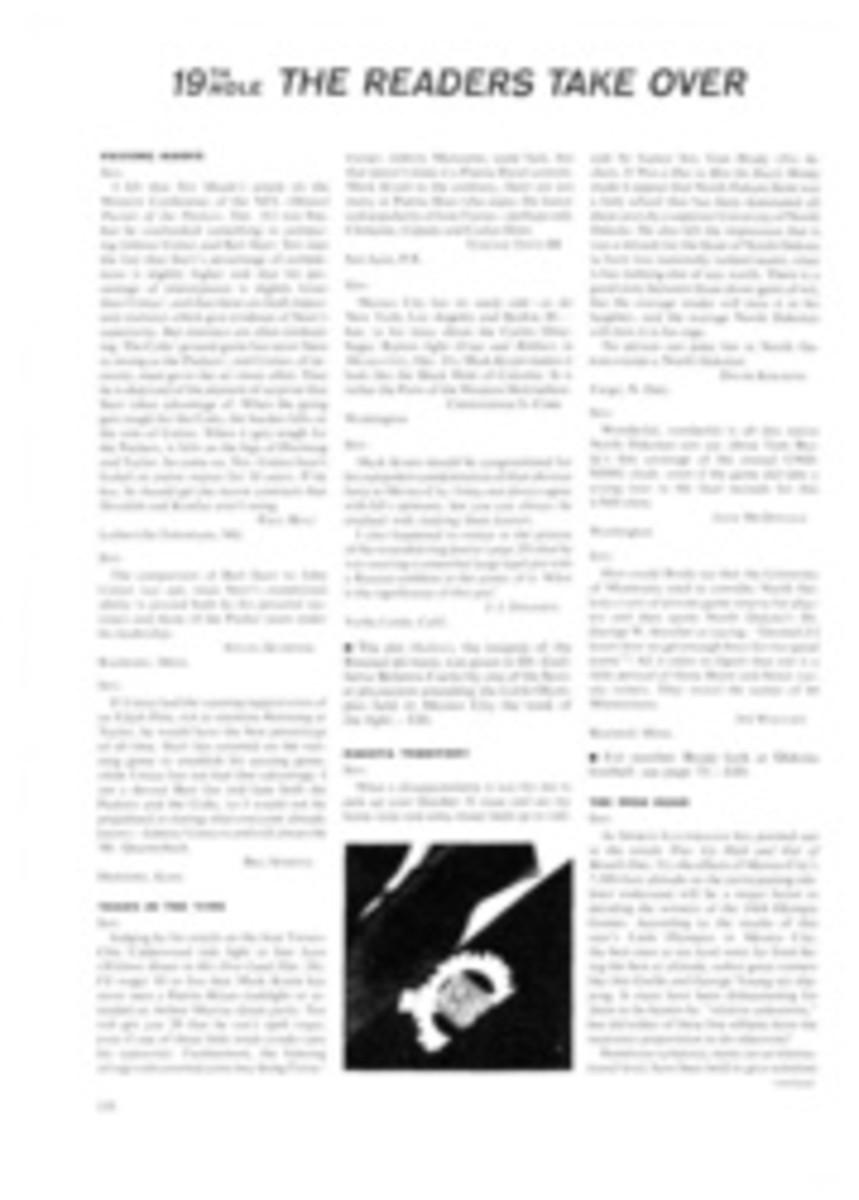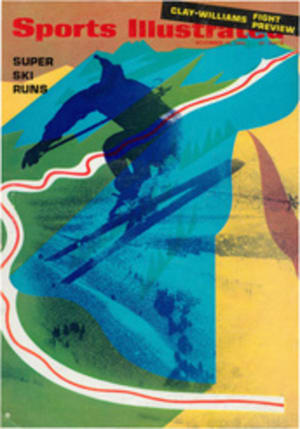
A history of the gas bags: forerunners of today's air travel and explorations
Sport of the Gods! Who else flies over a sleeping world, through space, and knows the joys of motion without movement, without sound, without effort?... The strange sense of being disembodied, of motionless suspension in mid-heaven, of solemn silence, makes a new environment for the heart of man." Thus did the rhapsodic Contessa Grace di Campello Della Spina describe her balloon voyage in 1907; one must bear in mind that the lady was on her honeymoon trip.
Balloon journeys were not always so serene. L.T.C. Rolt in The Aeronauts: A History of Ballooning 1783-1903 (Walker and Company, $5.95) promises "a tale of heroism and high endeavor, of bravura and folly, of tragedy, comedy, and, occasionally, sheer knockabout farce." The promise is fulfilled—with wit, gusto and the utmost clarity. The least technically minded reader in the world (me) soon becomes absorbed in the agonies and ecstasies of the extraordinary men and women whose early discoveries made our Space Age possible. Balloon fanciers will find their enjoyment enhanced by the book's delicious illustrations.
Comedy abounds. The pioneering Montgolfier brothers in 1782 discovered that a balloon filled with hot air would rise. The burning of noxious substances was, they supposed, creating a mysterious floating "gas." They sent out urgent appeals for old shoes and pieces of decomposed meat, which they allowed to smoulder in damp straw, producing a stench that quite overpowered King Louis XVI and Marie Antoinette when they tried to examine the new contraption. Rotting meat and stinking shoes notwithstanding, the brothers got a balloon into the air and down again.
Up, up, up went the brave pioneers (sometimes after a bit of hysterical swordplay to determine who was to have the privilege of ascending). With a pleasing gift for ironic characterization, the author parades them before our eyes: the cool-headed, heroic F. Pil√¢tre de Rozier, first man to take off" in a free balloon; and Madame Thible, the first lady aeronaut, who rose to the skies "singing like a bird." There was the eccentric anatomist, Dr. John Sheldon (his collection of anatomical specimens included the embalmed corpse of his departed spouse); the vain and flamboyant Lunardi, an irresistible ladies' man, who took a pair of oars aloft hoping, thus, to row through space; and the alcoholic Lieut. George Burcher Gale, R.N., whose last, fatal balloon ascent was made seated on a pony and in a severe state of intoxication.
Not only were the aeronauts the Glenns and Gagarins of their day, they seem to have been the Beatles as well. This popular adulation had its dangers. True, public subscription covered the cost of inflating a large balloon—an expensive business once hydrogen was being widely used. But ballooning as a spectator sport was fraught with lengthy delays and disappointments. Imagine the anguished feelings of the wretched balloonist waiting for the countdown amidst the highly charged emotions of a crowd growing ever more restive as the hours went by. If he rose before the weather and the wind were right, or if he rose before his craft was properly inflated, he risked death by falling, by burning, or by explosion. But if he kept his furious fans hanging about too long he risked being first jeered at for cowardice, then with having himself and his balloon brutally trampled underfoot.
Slowly techniques improved. The aeronauts learned the use of a ripcord to let the gas escape quickly after landing. Previously many had been dragged along on land or sea at terrifying speeds before the captive monster could be brought to heel. By the delicate manipulation of valves, ballast and air currents, they could exert some influence upon height and direction. Ballooning was developing from a zany hit-or-miss affair into a subtle art. In 1785 Blanchard and Jeffries achieved the first aerial crossing of the English Channel. But even these experts very nearly landed in the sea. Losing height rapidly, with no more ballast to jettison, they threw out every single thing they could think of, including their "trousers." Thus was the first overseas flight in history achieved.
They also carried with them a packet of letters—the world's first airmail. Mr. Rolts history of ballooning is littered with firsts: the first aerial fatality (if you discount Icarus) when De Rozier was tragically killed; the first air force (the French Corps of Aérostiers formed in 1794); the first use of aerial reconnaissance, during the Battle of Fleurus in 1794; the first airlift, from the Siege of Paris in 1870; the first scientific ascent to 30,000 feet; the discovery of the stratosphere in 1902. From the early 19th century onward, scientists as well as showmen were making regular balloon ascents, trying in earnest to remove ballooning from the atmosphere of gay and gaudy ballyhoo that had always surrounded it. They perceived that the balloon was not merely a decorative toy or a war machine, but a serious instrument of research.
There were still insuperable problems in navigating and directing the free balloon, and many suggestions were put forward as to how its wayward flight could be tamed—even the idea of harnessing birds was seriously canvassed. But the first truly navigable balloon was the dirigible, which used the internal combustion engine. Gone in a flash was the silence, the purity and ecstasy of free flight. It seemed at first as though the day of the balloon was done. But in the 1890s there was a remarkable renaissance among a wealthy minority who saw free ballooning as a delightful, if costly, sport. Aero Clubs were formed all over Europe and the U.S., and challenge cups were instituted for the best individual performances.
What of the balloon today? It has proved itself an invaluable research tool for meteorology and astronomy, a worthy stepping-stone to the world of outer space. And ballooning as a sport still attracts a small and devoted band of enthusiasts, who find in their surrender to the whims of the air a serenity that approaches a mystical experience. Readers who care to savor vicariously some of these pleasures will find Mr. Rolt's book an engaging chronicle of the heavenly adventure of ballooning.

